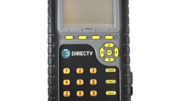This is the latest version of DIRECTV’s Advanced Installation Meter, better known as AIM. It’s one serious piece of equipment, and you can tell because it comes at a serious price. It’s nowhere near the most expensive satellite meter you can buy, but it’s quite a bit more coin than most of our Solid Signal fans would prefer to spend. If you’re considering the purchase of a meter, you have some decisions to make. We’re here to help you make them.
Who needs a satellite meter?
Obviously, installers are the number one market for satellite meters. If you’re putting dishes up all day every day it seems a little silly to be without one. Still, a lot of non-installers choose to have a meter close at hand for those times when the dish needs a quick re-alignment. If you tailgate, you should definitely have a good meter with you. Those inexpensive satellite finders work well for SD dishes but if you’re going to graduate to full HD in your travels, you’ll need a meter. Using a receiver to aim the dish is just going to slow you down.
What does the AIM bring to the table?
The AIM is the deluxe meter for all DIRECTV installations. It’s designed to make installations as fast as possible and that means plain instructions in English to help you get finished up. It’s also the only meter that can give you signal strength on individual transponders and the only meter that’s going to be able to aim the 99 and 103 satellites when a SWM dish is used. The AIM is the only meter that supports the reverse band broadcasts used by DIRECTV, and the only meter with a step-by-step installation method built right into the unit.
When is a satellite finder enough?

A satellite finder like this one is quite a bit less expensive than the AIM meter. If you have a non-SWM dish it can help you find the 101 satellite, but it won’t help you with any of the others. Not only that it is completely useless when it comes to SWM-enabled dishes. It’s a good tool to have if you truly need something simply but when it comes to DIRECTV service it’s not going to give you any value for the money.
What about DIRECTV’s new satellites?
Starting in 2015, AT&T launched three massive new satellites, one for each of its primary satellite locations. The AIM meter is the only meter that will read signals from all of them. That means it’s really the only meter you’ll want to use for aiming AT&T satellite equipment. Older DIRECTV meters will not work with the new satellites or with the second generation SWM technology found in today’s dishes. This is really your best choice.
My personal preference…
I’m a bit of a connoisseur of measuring equipment. I love everything from my $15 dBa meter to my $10,000 spectrum analyzer, depending on the application. Still, I love the AIM. If I had to choose only one meter for satellite use it would be that one. There is just nothing you can’t do with it, if you have the time. So, even I can’t make a decision. But for you, decide how you’re going to use it, and if you can save a few bucks I would do that. Just don’t cheat yourself out of a really great experience. Get your own AIM meter now from Solid Signal.





